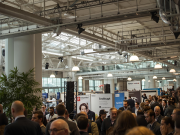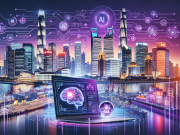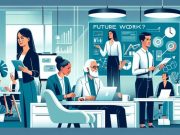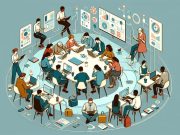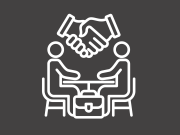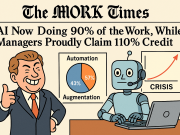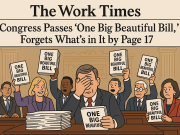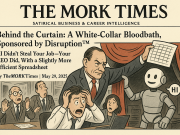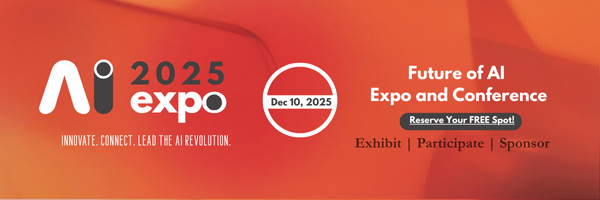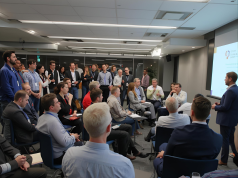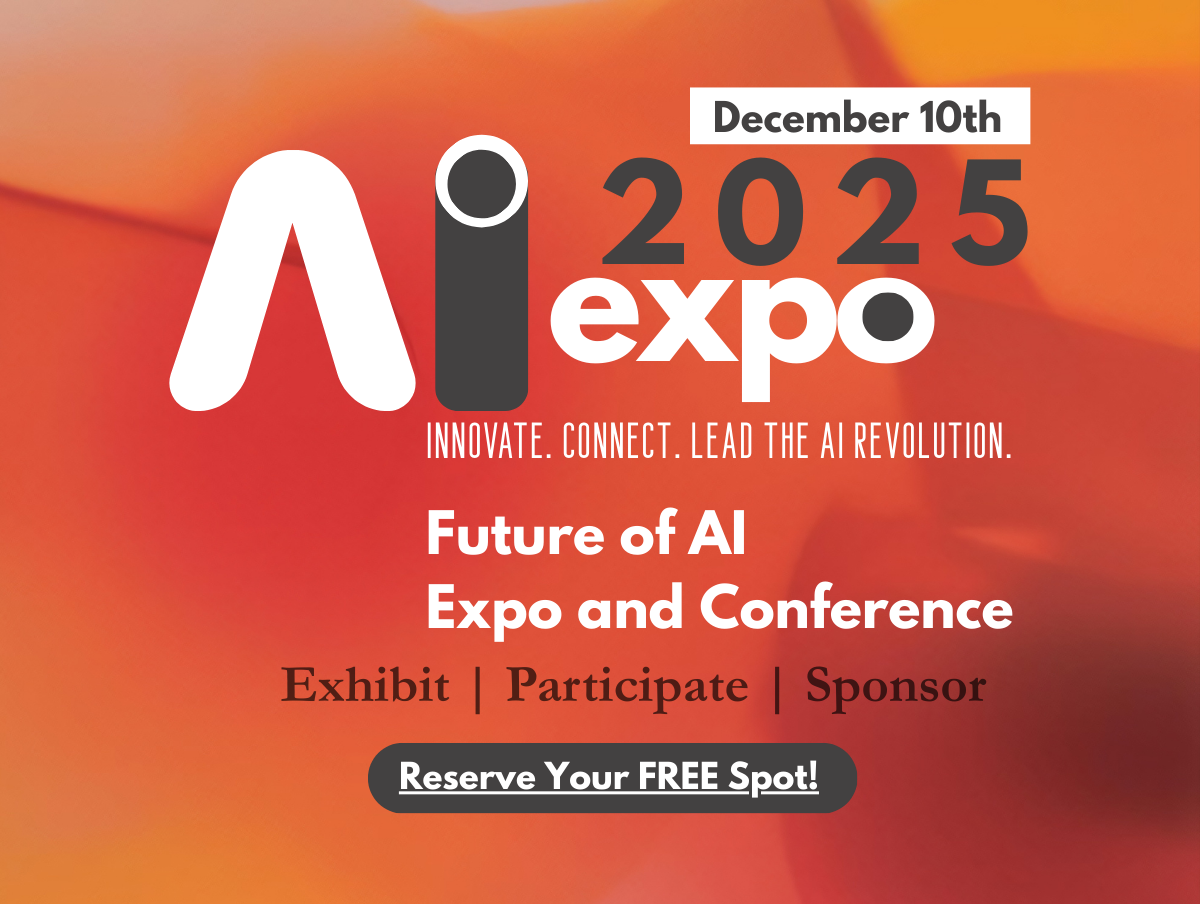Why Innovation and Creativity Matter More Than Ever
In today’s rapidly evolving world, productivity is often reduced to cold, hard numbers—the metrics of economic output, profit margins, and efficiency gains. For decades, productivity has been measured by how much a worker produces in a given amount of time, a formula born out of the industrial age when assembly lines dominated and tasks were highly structured and repetitive. But this view, though still prevalent, is no longer sufficient in a world where technological breakthroughs and digital transformation are redefining the way we work and live. In fact, this outdated lens risks undermining the immense value of human potential, particularly in areas like creativity, innovation, and adaptability.
As we stand on the threshold of new possibilities powered by artificial intelligence (AI), automation, and the digital economy, it is time to rethink what productivity truly means. Beyond output and efficiency, we need a framework that captures the breadth of human contributions—particularly our capacity for problem-solving, creative thinking, and innovation—and integrates it into how we measure and reward work.
This blog explores why innovation and creativity matter more than ever in redefining productivity, how technological advancements make this shift urgent, and what organizations and societies can do to unlock the full spectrum of human potential.
The Shift from Efficiency to Innovation: A Necessary Paradigm
For much of the 20th century, productivity improvements stemmed from technological advancements aimed at making processes faster and cheaper. Mechanization, computerization, and lean management principles all contributed to driving down costs while increasing output. However, these productivity gains often came at the expense of creativity, as workers were required to follow routines and procedures that limited their ability to think outside the box.
Today, that paradigm is being disrupted. Automation is taking over repetitive and routine tasks, from data entry to basic manufacturing, freeing up human labor for higher-order tasks that machines struggle with—namely, creativity, empathy, critical thinking, and problem-solving. This shift presents an enormous opportunity: to reallocate human effort from merely completing tasks to creating value through innovation.
Why does this matter so much? Because innovation—whether in product development, marketing, or organizational design—is the primary driver of long-term growth and competitive advantage in modern economies. Companies like Apple, Tesla, and Google have demonstrated that success in today’s economy is less about producing goods efficiently and more about creating products, services, and experiences that resonate with consumers on a deeper level. Creativity is no longer a nice-to-have; it’s the engine of sustained success.
Technological Disruption Demands Human Ingenuity
The rapid pace of technological advancement has introduced an unprecedented level of uncertainty and complexity into the business landscape. AI, machine learning, robotics, and blockchain are not just transforming industries; they are fundamentally altering the nature of work itself. In this environment, the ability to adapt, innovate, and solve complex problems has become a survival skill for organizations.
Consider how AI-driven automation is reshaping industries. Tasks that once required significant human effort can now be performed by algorithms in a fraction of the time. While this development has raised concerns about job displacement, it also highlights the growing importance of human ingenuity in areas where machines fall short—such as creativity, emotional intelligence, and ethical decision-making.
In fact, many experts argue that the jobs of the future will be defined by a symbiotic relationship between humans and machines, where technology handles routine tasks, and humans focus on areas that require intuition, imagination, and interpersonal skills. For example, AI can analyze vast amounts of data to identify patterns, but it cannot generate truly novel ideas or understand the nuances of human behavior in the way that a skilled marketing professional or product designer can.
Thus, as technology continues to evolve, the competitive edge will belong to individuals and organizations that prioritize creativity, continuous learning, and adaptability. These are the traits that enable people to pivot in response to change, identify emerging opportunities, and develop innovative solutions to complex problems.
Redefining Metrics: Measuring What Matters
One of the biggest challenges in shifting from an output-driven model of productivity to one that values creativity and innovation is the lack of suitable metrics. Traditional measures of productivity—such as output per hour or revenue per employee—fail to capture the value of intangible contributions like brainstorming new ideas, building strong team dynamics, or developing long-term strategies.
To address this gap, organizations need to adopt new metrics that reflect the realities of the modern work environment. Some potential approaches include:
- Innovation Metrics: Track the number of new ideas generated, products developed, or patents filed within a given time frame. While not all ideas will result in immediate success, fostering a culture of experimentation is essential for long-term growth.
- Collaboration and Teamwork: Evaluate the quality of collaboration within teams, recognizing that many of today’s most significant innovations result from cross-functional efforts rather than individual contributions.
- Employee Engagement and Well-being: Research shows that engaged and satisfied employees are more likely to be creative and productive. Metrics that measure employee satisfaction, psychological safety, and work-life balance can provide valuable insights into an organization’s overall health.
- Learning and Development: In an era of rapid change, continuous learning is critical. Organizations can track the number of training programs completed, skills acquired, or knowledge-sharing initiatives undertaken by employees.
Fostering a Culture of Creativity and Innovation
Redefining productivity is not just about changing metrics; it also requires a cultural shift within organizations. Companies that want to thrive in the technological era must create environments where creativity and innovation are encouraged, supported, and rewarded.
Here are some key strategies for fostering such a culture:
- Encourage Risk-Taking: Innovation inherently involves risk, and not every idea will succeed. Organizations should create an environment where employees feel safe to experiment and fail without fear of repercussions.
- Break Down Silos: Cross-functional collaboration is often the key to generating breakthrough ideas. By fostering open communication and collaboration across departments, companies can tap into a diverse range of perspectives and expertise.
- Invest in Continuous Learning: Providing employees with opportunities to learn new skills, explore emerging technologies, and stay up-to-date on industry trends is essential for maintaining a competitive edge.
- Recognize and Reward Creativity: Organizations should celebrate not only successful innovations but also the effort and creativity that go into generating new ideas. Recognition can come in many forms, from public acknowledgment to financial incentives.
A Broader Societal Perspective: The Role of Governments and Communities
While businesses play a crucial role in redefining productivity, governments and communities also have a part to play. Policies that support education, innovation, and entrepreneurship are essential for creating an environment where creativity and human potential can flourish.
Governments can invest in research and development, provide grants and incentives for innovative startups, and design education systems that prioritize critical thinking and problem-solving over rote memorization. Similarly, communities can foster creativity by supporting local arts and culture initiatives, creating co-working spaces, and encouraging knowledge-sharing networks.
The Path Forward: Embracing a New Definition of Productivity
As we move deeper into the technological era, it is clear that the traditional definition of productivity—focused on output and efficiency—is no longer sufficient. To unlock the full potential of human talent, we must broaden our understanding of productivity to include creativity, innovation, and adaptability.
This shift will not happen overnight, but it is essential for ensuring long-term success in a world characterized by constant change and disruption. By adopting new metrics, fostering a culture of creativity, and supporting continuous learning, organizations and societies can position themselves to thrive in the face of future challenges.
Know More..
Mark your calendars! The much-anticipated HAPI Whitepaper will officially launch on February 14th, 2025, in a joint release by Tao.ai and No Worker Left Behind. This groundbreaking document will outline the next-generation framework for measuring and enhancing human adaptability and potential in the workplace. Don’t miss it—it’s a game-changer!


